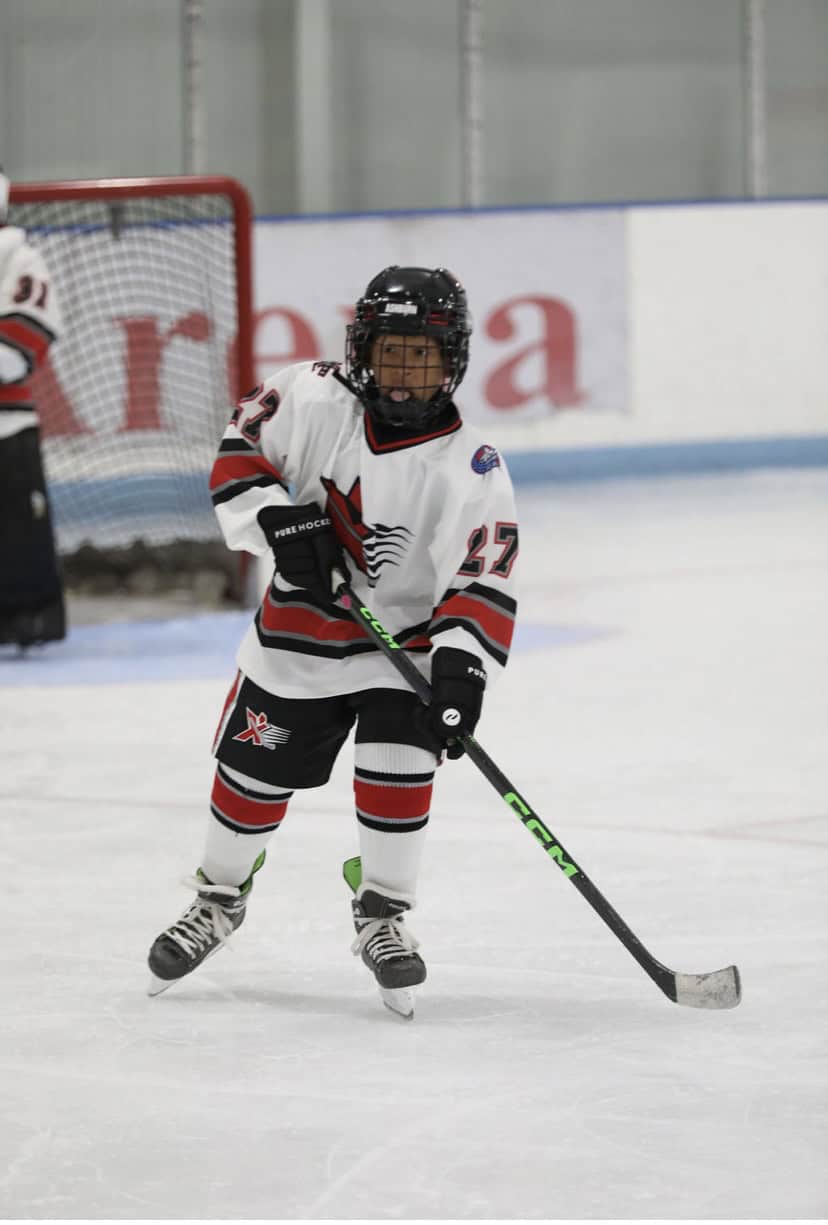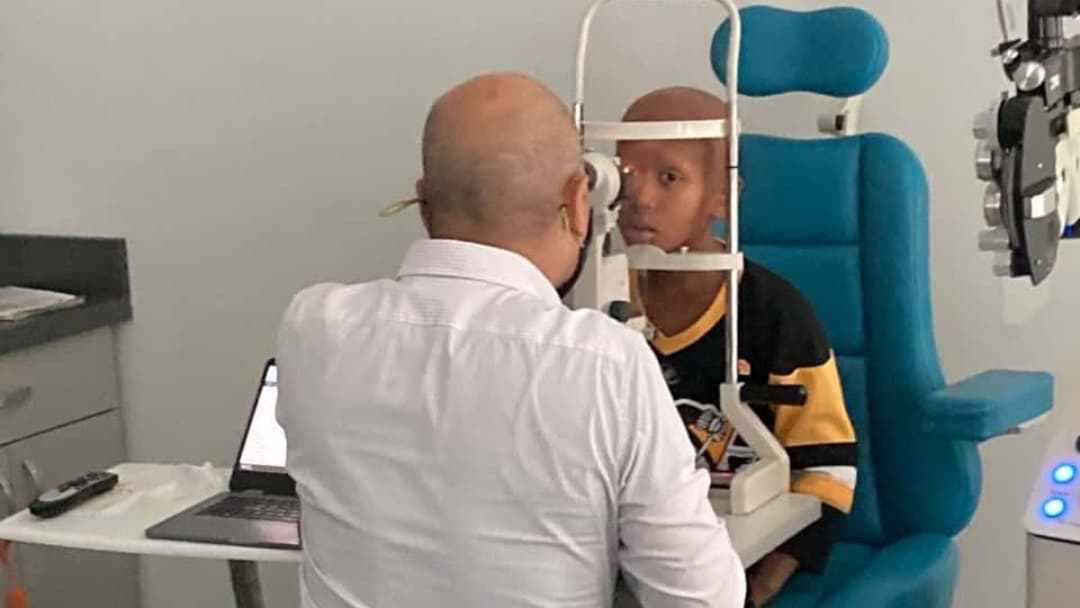As part of the FLIGHT™ Study’s baseline assessments, Jeremiah had initial evaluations by a functional dentist, an occupational therapist who assesses reflex integration, a neurofeedback practitioner, and a developmental optometrist, among others.
Some of these assessments might sound a bit unusual at first, given that Jeremiah’s primary diagnosis is alopecia universalis, a condition he has had since about the age of three and that means he has no hair on his body. However, the FLIGHT™ Study’s somewhat novel approach is to look at a child’s health issues from a root-cause, total-load perspective that takes into account multi-factorial stressors on a child and the multi-factorial structural and functional adaptations or compensations that result from such stressors.
During a thorough exam that lasted about 90 minutes, developmental optometrist Dr. Duc Nguyen discovered that Jeremiah has dyslexia – a visual-processing issue – which was unexpected, given the focus (no pun intended) on his original diagnosis, alopecia universalis, which is considered an autoimmune condition.

Dr. Nguyen gave Jeremiah’s family new insight into some of the challenges he had been having with reading and even more reason to admire the effort with which he had been approaching his schoolwork up until that point. The dyslexia diagnosis was a stunning revelation given that Jeremiah’s mom, a reading enthusiast, had created such a rich learning environment and extensive library of books for children of all ages right at home. This new diagnosis helped the family understand why this very bright child needed a little extra help with reading.
Developmental optometrists recognize that vision is not the same as visual acuity (eyesight – which asks questions such as “can you see 20/20?”). Instead, vision is understood as the brain’s process of interpreting information coming in through the eyes.
Children with neurodevelopmental conditions such as autism, ADHD, Sensory Processing Disorder, dyslexia and other learning challenges often have trouble with their eyes teaming and tracking together. Such convergence insufficiencies and other visual-processing issues are discovered through extensive evaluations performed not by a conventional ophthalmologist but by a development/behavioral optometrist such as Dr. Nguyen who has specialized training in evaluating vision in children from a developmental perspective.
The energy needed by the brain to interpret faulty visual-processing issues puts a lot of strain on the brain as well as the body. It is common that children with these issues also have dysfunction in their immune system, communication and social interaction. Thus, remediating vision issues can free up energy in the body to correct these other bodily functions. Developmental optometrists have anecdotally noted that children who undergo vision therapy often see improvements in language, communication and immune-mediated conditions such as allergies, asthma and eczema.
Dyslexia and other learning disabilities are usually discovered around second or third grade because that is when children’s learning differences often catch up to those of their peers. However, if they continue to have learning differences past these grades, it can compound the difficulty that a child has in keeping up.
Jeremiah began his vision therapy in June 2023 and enjoyed the fun exercises. The family committed to the weekly therapy because they understood how important it was to address his dyslexia. By August 2023, his mom started getting support for Jeremiah’s newly diagnosed learning challenges by requesting an IEP (Individualized Education Plan) at school and by finding a dyslexia tutor. By February of 2024, the logistics of the weekly two-hour-plus roundtrip commute to and from Dr. Nguyen’s office coupled with the other children’s after-school schedules and the prospect of making a home-cooked meal began to take their toll on the family, and they chose to at least temporarily discontinue his visits after his last visit in March.
By March 2024, Dr. Nguyen reported that while Jeremiah’s ability to converge and sustain his eyes at a near distance had improved and was fairly normalized, the speed and accuracy of his eye movements had not budged much. His progress had plateaued, so the FLIGHT™ Study team encouraged the family to pursue another therapy closer to home, such as cranial sacral work in hopes that it might continue to support the progress he was making and promote more functional eye movements by calming the brain stem and getting Jeremiah into a more parasympathetic (“rest and digest”) state in which healing occurs. Optimal health is the goal of the FLIGHT™ Study (or a Genuine Health Transformation – the “GHT” in FLIGHT™).
Jeremiah’s mom has agreed to have Jeremiah try a few rounds of cranial sacral therapy before deciding whether to continue with vision therapy, potentially in the fall of 2024. We don’t know if this work will also support his hair regrowth, which has been showing signs of returning, too, but we do feel hopeful that it will support his academic future and even his hockey game (which we hear is top notch); and we are glad to have the opportunity to continue Documenting Hope!

